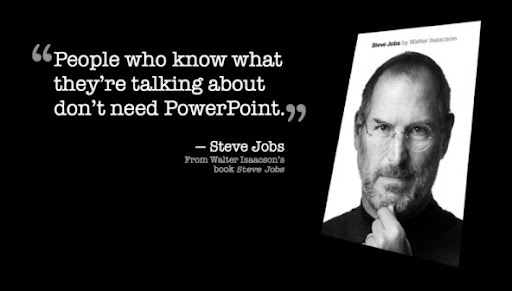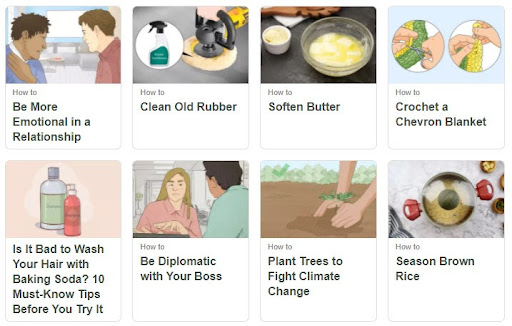You may have heard the old adage “content is king” a million times. But have you ever found a head worthy of the crown? Probably not!
A writer’s responsibility is to build brand loyalty and trust with their words. By focusing on creating quality content it is their role to engage readers and keep them coming back for more.
But the truth is that the World Wide Web is overwhelmed with different types of content vying for the reader’s attention. And in the sea of choices, it can be challenging to make your articles stand out above the crowd.
In this guide, we will discuss how to create an engaging blog post and offer your readers something genuinely worthy of their time.
Let’s get started.
Research and Plan
Before you start writing your content, make sure to understand your target audience clearly. Research the demographics that may be interested in your product/services and create a buyer’s persona accordingly.
Think about the type of content they would like to read and the tone that best resonates with them. For example, suppose your target audience is mainly millennials looking to start their business. In that case, you may want to write in a more casual and personal manner. You may also want to skip generic topics like ‘how to create a social media business page’, as most youngsters have this down to pat.
It is also a good idea to think about topics that will interest you along with the readers. There is a popular statement that says, “no fun for the writer, no fun for the reader.” Regardless of the industry, you blog in, you should live by this maxim and try to find content topics you are passionate about.
Otherwise, the audience will immediately pick up on your boredom and find a lack of enthusiasm in your written pieces.
Use a Catchy Headline
A crappy headline is similar to the kiss of death.
Because most readers don’t read beyond the headlines, it is essential to keep the title of your blog attention-grabbing. Plus, titles play an important role in SEO. A well-crafted headline will include the elements required to help your page rank higher in the SERPs, ultimately generating more organic traffic for your website.
When writing the headline, make sure to include what readers can expect. This will help to avoid any confusion. Make it to the point and be straightforward about the content you will be delivering. And, of course, do deliver what you promised in the headline, so your readers don’t feel like they have been manipulated.
It’s also a good idea to:
- Be creative with your title.
- Make the headline beneficial for the readers.
- Use relevant keywords in the title.
- Try listicles such as ‘Top 10 Reasons….’ or ‘9 Best….’
- Ask a question in your title.
- Start with a secret to evoke the fear of missing out. ‘The Secret to…’
Another way to attract attention to your blog post is to start the title off with a ‘why’ or ‘how to’. If your article is aimed at providing educational value, it is a good idea to craft your headline using these words (i.e., read the title of this blog).
For example, look at these headlines from wikiHow:
Note how these articles promise to convey solutions to specific problems. Besides capturing the reader’s interest, they are also more likely to rank higher in SERPs.
Provide Value From Beginning to End

One of the biggest mistakes bloggers make is to offer the audience valueless content. They add so much fluff to the content that the readers become wary and leave without completing the whole piece.
If truth be told, most writers don’t have any idea about the topic when they sit down to write. But they do have a natural curiosity which makes them great at what they do, i.e. engaging the readers with compelling content.
So how do you provide them with informational content:
- Start by doing a comprehensive research.
- Don’t rely on only one source for information.
- Organize your content clearly, so it’s easier to understand.
- Use short sentences and paragraphs.
- Keep content straight to the point and keep the fluff to the minimum.
- Avoid plagiarization at all costs.
- Solve everyday problems with your content.
- Be empathetic and step into the target reader’s shoes when writing.
I also recommend getting maximum writing done as possible in one session. This will help you remain entirely focused on the given topic. Otherwise, you will be tempted to make additions here and there every time you open the draft. And before you know it, you have gone wildly off-topic!
Insert Visuals

It is said humans are visual learners and enjoy graphic content more than textual. They also engage more with content like pictures, videos, and infographics. Here is some data to help you understand my point and demonstrate how much visual content spikes up the reader’s interest.
- Blog posts with images receive 650% more engagement than text-only posts.
- An average visitor only reads 20 – 28% of words during an average visit.
- People remember only 10% of what they hear, but 80% of what they see even 3 days later.
- It is predicted that almost 80% of businesses rely heavily on visual marketing.
- Video is the primary form of media used in digital marketing.
Simply put, the visual medium is a critical component for any blogging strategy.
When creating images and videos for your blogs, it is preferable to add customized visuals. However, media files from reputable photo websites can also do the trick, as most bloggers are not naturally skilled at photography.
It’s also a good practice to use a combination of pictures, videos, infographics, memes, and other interactive content in your blog post. Especially infographics, as they help describe a complex process or highlight statistics effectively.
As a general rule of thumb, you should add one picture every 200 to 300 words to keep the viewer’s attention alive. It should also be relevant to the topic and nothing out of the blue or else, you will end up confusing the reader.
Stop Being Salesy
If you are working under a sales and marketing team, chances are you will be under immense pressure to make sales with your blogs. However, the problem with branded content is that consumers are sick and tired of being sold to. The more you pitch with an aggressive marketing message, the more they will shy away from your blogs.
So rather than being salesy, try becoming a thoughtful leader of the industry. Be more informative and focus on educating the readers.
However, don’t make your write-ups similar to an essay. Instead, write as you are talking to friends – casually and informally.
This will make your writing flow naturally and be more compelling.
Give Attention to Your Post
One of the most impactful things you can do for your post is to edit profusely. But, to really make sure you have done your best, my advice is to step back for some days and then do the editing process.
You see, writing has always been an immersive protocol. Without having the intention, you go over the article so many times that you memorize it by heart. And this usually results in overlooking the details.
This is why it is essential to spend some days away from the blog post. By taking some days off, you will gain a fresh perspective on the article and be able to criticize more effectively.
When revising your blog post, read the content loudly to understand the flow. Use editors like Grammarly and Hemmingway Editor to make your writing clear and eliminate grammar mistakes. These editing tools will also make your sentence structure short and make the overall content easy to read.
You can also consider asking someone else like friends and family to proofread your work. Let them prompt you regarding the flow and grammar mistakes (if any). Having another set of eyes scrutinizing your work will give you a better understanding of what to expect from the readers and help you improve your writing as well.
Monitor Your Performance

Look at the data and the key performance indicators (KPIs). For your blog post, this would likely include:
- The number of visits your blog has.
- Bounce rates of your webpage.
- The primary source of traffic.
- The number of comments and shares.
- Conversion rates.
Knowing these numbers will not only give you fun facts, they will provide you with data that will ultimately help you improve your content marketing strategy.
For example, if you have a high number of visits but high bounce rates as well, you can conclude that your blog post is not giving the readers what they want. Or, if you have low conversion rates, you may not have optimized your blog post for maximum conversions.
Look at the data comprehensively and adjust your findings to make your content more appealing and worthy of the reader’s time.
Create More Engaging Content Today
Like many other skills, writing becomes more refined, easier, and more natural the more you do it. Although there are no ‘hacks’ or ‘shortcuts’ to great writing, the above tips can hopefully assist you in making your written content more captivating and powerful to increase your conversion rates.
Give these tips a try and see your posts’ engagement rates rise up. Good luck!











